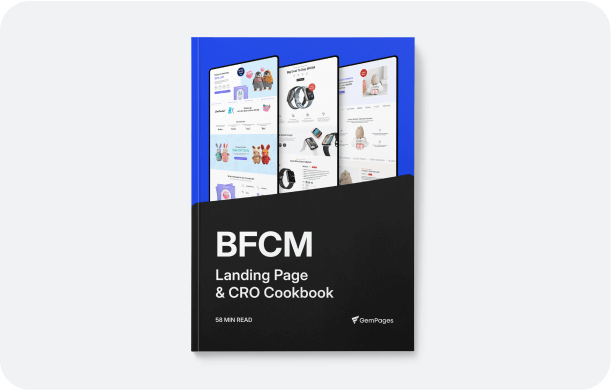The Art of Storytelling in Online Retail

Stories, spoken or written, all are powerful. They evoke emotions within the audience and establish a relationship. To stand out amidst fierce eCommerce competition, businesses are harnessing the power of storytelling in their online storefront design. By weaving narratives into the digital shopping experience, they can captivate customers, foster brand loyalty, and drive success. In this article, we explore 6 key factors in creating impactful storytelling through online storefront design and their profound impact on captivating customers.
The Importance of Storytelling in Online Storefronts

With B2C ecommerce valued at $6.4 trillion in 2023 and growing at over 9% compound annual growth rate (CAGR), online shopping demand remains strong. Over 60% of shoppers prefer online purchases, making online storefronts ideal for impactful storytelling to boost engagement, loyalty, and conversions.
The global eCommerce website builders market is projected to reach $3.5 billion by 2032 (Fact.MR).
The key differentiator is a compelling brand story, which communicates values, evokes emotions, and builds connections, transforming online storefronts into memorable destinations.
Emotional Appeal in Storytelling
Effective storytelling in online retail often hinges on its ability to arouse emotions. By crafting narratives that resonate emotionally with your audience, you can forge deeper connections and foster loyalty.
Note: Highlighting real-life scenarios, customer testimonials, or personal anecdotes can make your brand more relatable and memorable.
Learn more: How to Sell Personalized Items on Shopify in 2023
Maintaining Brand Authenticity
Authenticity is key to impactful storytelling, helping to build trust and credibility. Align your brand's narrative with its core values and mission. Transparent and honest storytelling, free from excessive promotion, not only engages customers but also sets your brand apart in a competitive market.
Learn more: How to Promote Shopify Store: 15 Solid Strategies + Inspiring Examples [2024]
Consistency Across Channels
Consistency in storytelling across various online platforms reinforces your brand identity and message. Whether through social media, email marketing, or your website, maintaining a cohesive narrative strengthens brand recall and reinforces key brand messages. Consistent storytelling enhances brand recognition and customer loyalty.
Pro tip: Choose an easy to start platform to build your brand. Considering Shopify as a choice!

Storytelling Throughout the Customer Journey
Tailor your storytelling to different stages of the customer journey. From creating awareness with compelling brand narratives to guiding customers through the consideration phase with engaging product stories, effective storytelling supports conversions and nurtures customer relationships. Adapting narratives to each stage enhances relevance and encourages customer engagement.
Learn more: How to Build An eCommerce Sales Funnel Strategy in 2024 [+ Examples]
Data-Driven Storytelling
Utilize customer data and insights to personalize storytelling efforts. Analyzing customer behavior and preferences allows you to craft narratives that resonate with specific audience segments. Data-driven storytelling enhances relevance and effectiveness, optimizing engagement and conversion rates.
Learn more: Shopify Tutorial: Everything For Success [2024]
SEO and Storytelling
Integrate storytelling with SEO strategies by incorporating relevant keywords and narratives. Crafting content that appeals to both search engines and human audiences improves visibility and organic traffic. Optimizing product descriptions, blog posts, and landing pages with compelling narratives enhances SEO performance, driving qualified traffic and improving online visibility.
Pro tip: Building a blog channel is also a way to convert your customers. Here are the Shopify blog apps to assist your customization, top blog themes on Shopify for you to choose and of course, how to add a blog post to your Shopify store. Don't miss it!!!
06 Key Factors in Creating Impactful Storytelling
1. Crafting a Compelling Brand Narrative

A compelling brand narrative is central to effective storytelling in online storefront design. Businesses should pinpoint their core values, mission, and unique selling propositions to develop an authentic story that resonates with their target audience.
This narrative should evoke emotions, spark curiosity, and build a strong sense of identity and connection with the brand. A well-crafted brand narrative forms the foundation of the storytelling journey within the online storefront, turning it into an engaging and memorable experience.

Allbirds, a sustainable footwear brand, utilizes storytelling to convey its commitment to eco-friendly practices. Their online storefront incorporates visuals and product descriptions that highlight the materials used and the brand's dedication to sustainable fashion. The narrative revolves around the idea of comfort, simplicity, and environmental consciousness, enabling customers to connect with the brand's story.
Pro tip: Install a Shopify third-party app like GemPages to access over 100 high-converting pre-built templates. These templates impress viewers with their compelling visuals and well-organized sections. Additionally, you can design like a pro using the drag-and-drop feature, with no coding required.

2. Visual Storytelling in Online Storefronts
 Visuals are crucial in online storefront design, creating immediate impact and enhancing storytelling. Colors, typography, imagery, and layout all contribute to the brand narrative.
Visuals are crucial in online storefront design, creating immediate impact and enhancing storytelling. Colors, typography, imagery, and layout all contribute to the brand narrative.
Visually compelling designs capture customer attention and convey the brand message effectively. Consistent visual storytelling enhances brand recognition and creates a memorable shopping experience.
 Airbnb's online storefront seamlessly integrates storytelling to engage customers. Through captivating visuals, immersive property descriptions, and guest reviews, the platform creates a narrative that allows customers to envision themselves in unique accommodations and experience the stories of hosts and travelers worldwide.
Airbnb's online storefront seamlessly integrates storytelling to engage customers. Through captivating visuals, immersive property descriptions, and guest reviews, the platform creates a narrative that allows customers to envision themselves in unique accommodations and experience the stories of hosts and travelers worldwide.
3. Compelling Product Descriptions and Storytelling
 Product descriptions provide an opportunity to incorporate storytelling into the online storefront. Instead of presenting dry facts and features, businesses can infuse product descriptions with narratives that emphasize the benefits, inspiration, and value that the product brings to the customer's life.
Product descriptions provide an opportunity to incorporate storytelling into the online storefront. Instead of presenting dry facts and features, businesses can infuse product descriptions with narratives that emphasize the benefits, inspiration, and value that the product brings to the customer's life.
By painting a vivid picture and connecting products to relatable experiences, businesses can engage customers' imagination and create an emotional connection. Compelling product storytelling enhances the overall narrative of the online storefront.
 Lush, a cosmetics retailer, uses storefront design to communicate its commitment to natural, eco-friendly products. Their storefronts often feature living green walls, showcasing their dedication to sustainability. The incorporation of fresh, vibrant elements creates an inviting and immersive environment that aligns with their brand narrative.
Lush, a cosmetics retailer, uses storefront design to communicate its commitment to natural, eco-friendly products. Their storefronts often feature living green walls, showcasing their dedication to sustainability. The incorporation of fresh, vibrant elements creates an inviting and immersive environment that aligns with their brand narrative.
4. Creating Engaging Collections and Visual Experiences

Curating captivating collections and designing visually appealing experiences is a key aspect of storytelling in online storefronts. Think of these collections as carefully curated journeys that guide customers through a captivating narrative.
By organizing products into themed collections, businesses can create a seamless and immersive experience for customers. These collections bring together related products, creating a cohesive story and allowing customers to explore different facets of the brand's offerings. Visual elements like high-quality images, lifestyle photos, and interactive features enrich the storytelling experience, encouraging customers to engage with the brand's narrative in a more dynamic and enjoyable manner.
Learn more: Shopify Collections: A Complete Guide (2023 updated)
5. Interactive and Dynamic Elements
 Interactivity and dynamic elements amplify the storytelling potential of online storefronts. Features like 360-degree product views, virtual try-on tools, and interactive quizzes engage customers with the brand narrative, fostering active participation and personalization. These elements make online shopping more immersive, enjoyable, and memorable, strengthening the emotional connection between customers and the brand.
Interactivity and dynamic elements amplify the storytelling potential of online storefronts. Features like 360-degree product views, virtual try-on tools, and interactive quizzes engage customers with the brand narrative, fostering active participation and personalization. These elements make online shopping more immersive, enjoyable, and memorable, strengthening the emotional connection between customers and the brand.
 Nike has successfully incorporated storytelling into its storefronts worldwide. They create immersive experiences that bring their brand narrative to life by integrating large digital screens and interactive elements. For example, their flagship stores often feature interactive sports simulations, allowing customers to experience the thrill of their products in action.
Nike has successfully incorporated storytelling into its storefronts worldwide. They create immersive experiences that bring their brand narrative to life by integrating large digital screens and interactive elements. For example, their flagship stores often feature interactive sports simulations, allowing customers to experience the thrill of their products in action.
6. Customer Testimonials and User-Generated Content

Leveraging customer testimonials and user-generated content (UGC) adds authenticity and social proof to the storytelling experience in online storefronts. Genuine customer stories, reviews, and UGC like photos or videos create a sense of community and trust. This enables potential customers to connect with real experiences and narratives, reinforcing the brand story and building confidence in the offered products or services. Customer testimonials and UGC play a vital role in engaging customers and deepening their connection with the brand.
Wrapping-up
In conclusion, by embracing the power of storytelling, businesses can transform their online storefronts into captivating destinations that leave a lasting impression on customers. The art of storytelling through online storefront design lies in crafting a compelling brand narrative, utilizing visual storytelling, incorporating interactive elements, and leveraging customer testimonials. Storytelling through online storefront design has become an integral part of creating a captivating and memorable online shopping experience.




 Facebook Community
Facebook Community Change Log
Change Log Help Center
Help Center









